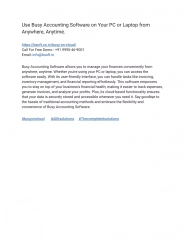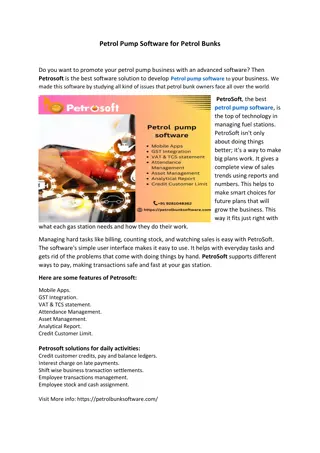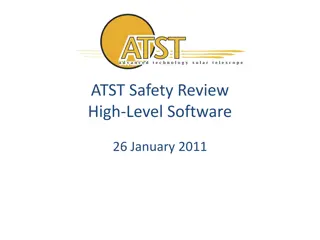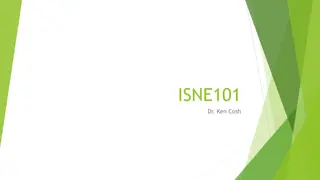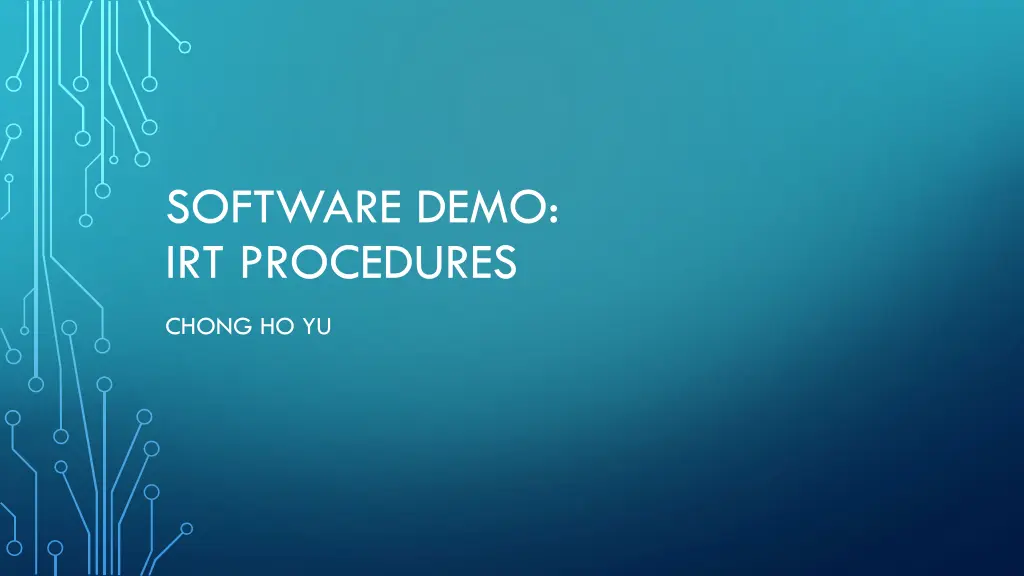
Understanding Item Response Theory (IRT) Procedures and Practices
Explore software options for IRT analysis, implications of test difficulty on grading practices, and the benefits of using Item Response Theory in educational assessment. Learn about common approaches like curving, norming, and regrading, and discover a better way through IRT.
Download Presentation

Please find below an Image/Link to download the presentation.
The content on the website is provided AS IS for your information and personal use only. It may not be sold, licensed, or shared on other websites without obtaining consent from the author. If you encounter any issues during the download, it is possible that the publisher has removed the file from their server.
You are allowed to download the files provided on this website for personal or commercial use, subject to the condition that they are used lawfully. All files are the property of their respective owners.
The content on the website is provided AS IS for your information and personal use only. It may not be sold, licensed, or shared on other websites without obtaining consent from the author.
E N D
Presentation Transcript
SOFTWARE DEMO: IRT PROCEDURES CHONG HO YU
SOFTWARE FOR IRT AND RASCH SAS (PROC IRT): Very versatile, can do various IRT models JMP: Can be used for binary outcomes only (0-1), not for partial credit (e.g. 0-100) or rating scale data (e.g., 0-5). SPSS: Use an R package, but doesn t work well. Bilog-MG: Binary logit function for multi-group, very expensive. Winsteps (Windows for Step Function): Less expensive, Rasch model only, Windows only, not-so-good interface. RUMM (Rasch Unidimensional Measurement System): Expensive, Rasch model only, Windows only. Python and R: Free, powerful, not-so-good interface.
HYPOTHETICAL DATA SET: IRT_DEMO.JMP 125 observations. A 21 item test taken by students from three universities: Azusa Pacific University (APU) California State University (CSU), University of California at Los Angeles (UCLA).
EASY TEST By looking at the histogram and the descriptive statistics alone, I can tell that reporting raw total score (sum of item 1-21 scores) will be problematic. Why? The distribution is negatively skewed. The median is 20 whereas the mean is 18.336. In other words, most students did very well and needless to say, the test is very easy.
CURVING AND NORMING? It is a common practice for instructors to adjust the curve when most examinees receive poor scores. As a result, their grades are typically improved by one letter (e.g. C B, B A). At first glance, it sounds reasonable, but indeed it is unfair. Why? Students demand norming and curving when the test is difficult or their scores are not desirable. But in this example when the majority achieved high scores, should all the grades be adjusted downward by one letter?
REGRADE? Another common approach is that the instructor looks at the statistics to spot difficult items. For example, if 80% of the examinees fail a particular question, the instructor will give full credit to everyone or drop the item. Is it fair? First, it is unfair to those well-prepared students who answered the tough item correctly. Second, when some question is so easy that 90% of the students could score it, would the grader take away the point from the student?
BETTER WAY: IRT SORE (THETA) Item Response Theory (IRT) estimates the ability of the examinees by taking item difficulty into account. In JMP, go to Analyze Multivariate Item Analysis. Put all items into Y. Accept the default Logistic 2P. Click OK
INFORMATION PLOT If this test is given, the most reliable information that we can obtain is the information from the students whose ability is around 1 or +1.5.
DUAL PLOT: ITEM-PERSON MAP The attributes of all items and students are re scaled in terms of logit, and therefore they can be compared side by side. Logit is the natural log of the odds ratio. JMP is interactive. If you want to identify the students who are above average (>0), you can select the points and the corresponding rows in the table are highlighted simultaneously.
PARAMETER ESTIMATES IRT centers the degree of item difficulty at zero. Any item that has a difficulty value below 0 is considered easy whereas any question that has a difficulty parameter above 0 is regarded as challenging. Almost all items are easy, as indicated by their negative difficulty parameters. Item 1 has a higher difficulty parameter than all others. Item 11 has a very low discrimination power.
ICC & IIF You can examine item characteristic curve (ICC) and item information function (IFF) of each item by clicking the down arrow of Characteristic Curves. The red line shows the intersection of the probability and the ability when P = .5. In Question 3, students whose ability level is about 2 have 0.5 probability of answering the item correctly. In other words, if the item is easy, the red line leans toward left; if it is hard, it leans toward the right. By looking at the location of the red line, the user can tell which item is a challenger and which one is a give away.
ABILITY FORMULA (THETA) The primary goal of IRT is to examine the quality of items. One should not make a firm judgment about the student ability until items are validated. One can conduct an initial analysis using the ability estimates yielded from IRT modeling. To append the ability estimates to the original table, click the red triangle and choose Save Ability Formula.
TOTAL AND IRT SCORED ABILITY Theta (ability estimate) and raw scores are not necessarily corresponding to each other. The panel on the left shows the histograms of raw score (sum total of all 21 items) and ability. While most students who earned 20 points (highlighted bar) have the highest estimated ability, some of them are classified as average or low ability (between 0.5 and 1)!
COMPARE APU, CSU, AND UCLA BY RAW TOTAL In terms of mean score of the total, APU is the best and CSU is the second, whereas both APU and CSU outperformed UCLA.
COMPARE APU, CSU, AND UCLA BY RAW TOTAL In terms of mean score of IRT- scored theta, the order is opposite!

